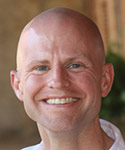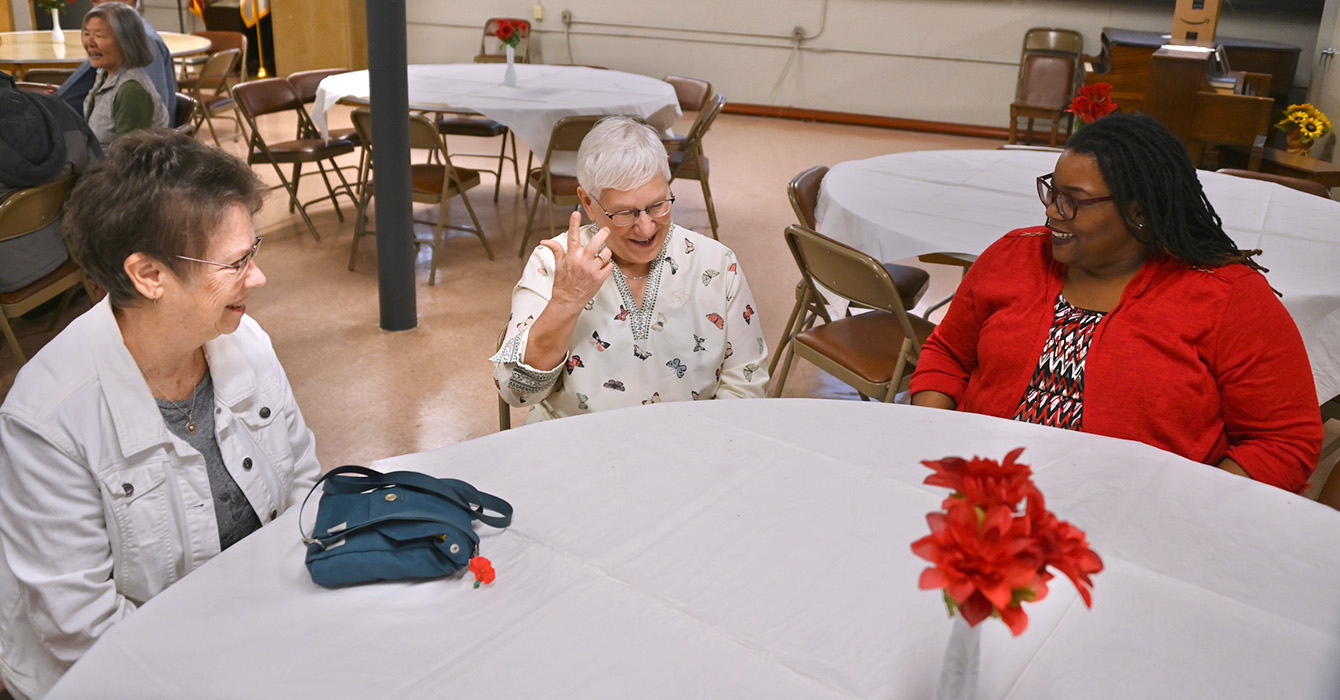It was the custom at the church where I did my first internship for those leading worship to wear Geneva gowns, the black robes of academic processions.
At 23, I owned only one Geneva gown -- the tissue-paper-thin version I had worn to my college graduation. It was shiny under the sanctuary lights, and its craftsmanship left something to be desired. I was surprised that it had successfully survived the one day of graduation exercises; 10 Sundays of liturgical leadership would be too much.
“Not to worry,” declared the worship director. “We have a closet full of donated robes in the sacristy.”
She was not lying. When I opened the closet doors, I found at least 25 robes. The congregation was located in a community where scores of clergy retire and, it turns out, donate their robes as they transition out of full-time ministry.
As I sorted through the robes, I felt a bit like Goldilocks. This one was too long; that one, too short. This one was too tight; that one, too loose. After auditioning most of the 25, I settled on the least ill-fitting of the bunch. It was still ill-fitting; it dragged on the floor behind me and was designed for a person weighing about 50 percent more than I weighed. But it was the best the closet had to offer.
Sunday morning came, and I entered the sanctuary for the first time in my borrowed robe. I was increasingly conscious of the way it felt around me, how hot and heavy it was. I felt like I was playing dress-up. I kept waiting for someone in the congregation to stand and ask who had let the kid into the chancel.
At the end of the service, I stood at the back door of the church greeting the faithful. Toward the end of the line, there came a retired bishop whose name I had known for years but whom I had never met. He had the reputation of being a consummate gentleman and a model of faithful witness. In his retirement, he taught the largest Sunday school class and would only reluctantly talk about his days as a bishop, which was part of his charm.
After shaking my hand, he said, “My robe hasn’t been in a pulpit in a while. It was good to see it back there today.”
“Oh, Bishop, I’m sorry,” I started, “I should have asked your permission before wearing it. I was told that the ones in the sacristy …”
He interrupted me, “Son, it’s OK. We all start in borrowed robes before we find our own.”
And with that, he walked away.
It took me until later that afternoon to realize that he both was and was not talking about the robe itself. He was naming something that was fundamentally true about ministry, about leadership, about life itself.
We all start in borrowed robes.
Our sermons have echoes of the preachers we have admired and whose voices have shaped us. Our pastoral care visits bear the distinctive marks of those who have taught us, but even more, those who have prayed with us in our own seasons of grief, fear and anxiety. Our work for justice and peace reflects the priorities we have inherited.
In our first days of institutional leadership, as in our first days in new roles, we pattern our work after those we know have been faithful and effective. We imitate their practices. We rely on their experience. We deck ourselves in the credibility of our predecessors (or live with the consequences of the lack thereof).
We all start in borrowed robes.
The second part of the bishop’s statement is equally important -- “before we find our own.” Borrowed robes can be borrowed for only so long. Each of us must find our own robe, the one that fits us uniquely. We each must find the one that is tailored to our gifts and particularities, the one that acknowledges our limits and accounts for our flaws.
For long-tenured leaders, this is no surprise. But for younger and newer leaders, the necessity of finding one’s own robe is often not readily apparent. Imitation can take a novice a long way, after all, and it is frequently rewarded handsomely.
Yet there is a certain inauthenticity to it, and eventually, the symptoms of the imposter syndrome set in. Even the best of borrowed practices must eventually be adapted and made native.
The place where the analogy may break down is that for many of us -- if not most of us -- it takes a community, over time, to help us find our own way of serving and leading. It is not as simple as taking some measurements and ordering online.
In Foundations of Christian Leadership and Denominational Leadership, Leadership Education at Duke Divinity works with younger and newer leaders to discern how they will lead in their institutions and denominations, informed by but often in contrast to the witness of others who have led in the same organizations and traditions. In the Institute of Preaching, one of our consistent development goals with younger clergy is to help them find and hone their own voices in the pulpit. They have to quit echoing to begin speaking.
There are other ways of finding a learning community besides enrolling in a formal program, of course. Colleague groups can be helpful and formative. Professional mentors can assist. Friends can support us and challenge us. The essential thing is that we make the transition from borrowed robes to finding our own.
Warren Bennis, the longtime professor and researcher at The Leadership Institute at the University of Southern California, made the same point in different words. “Becoming a leader is synonymous with becoming yourself. It is precisely that simple, and it is also that difficult.”









